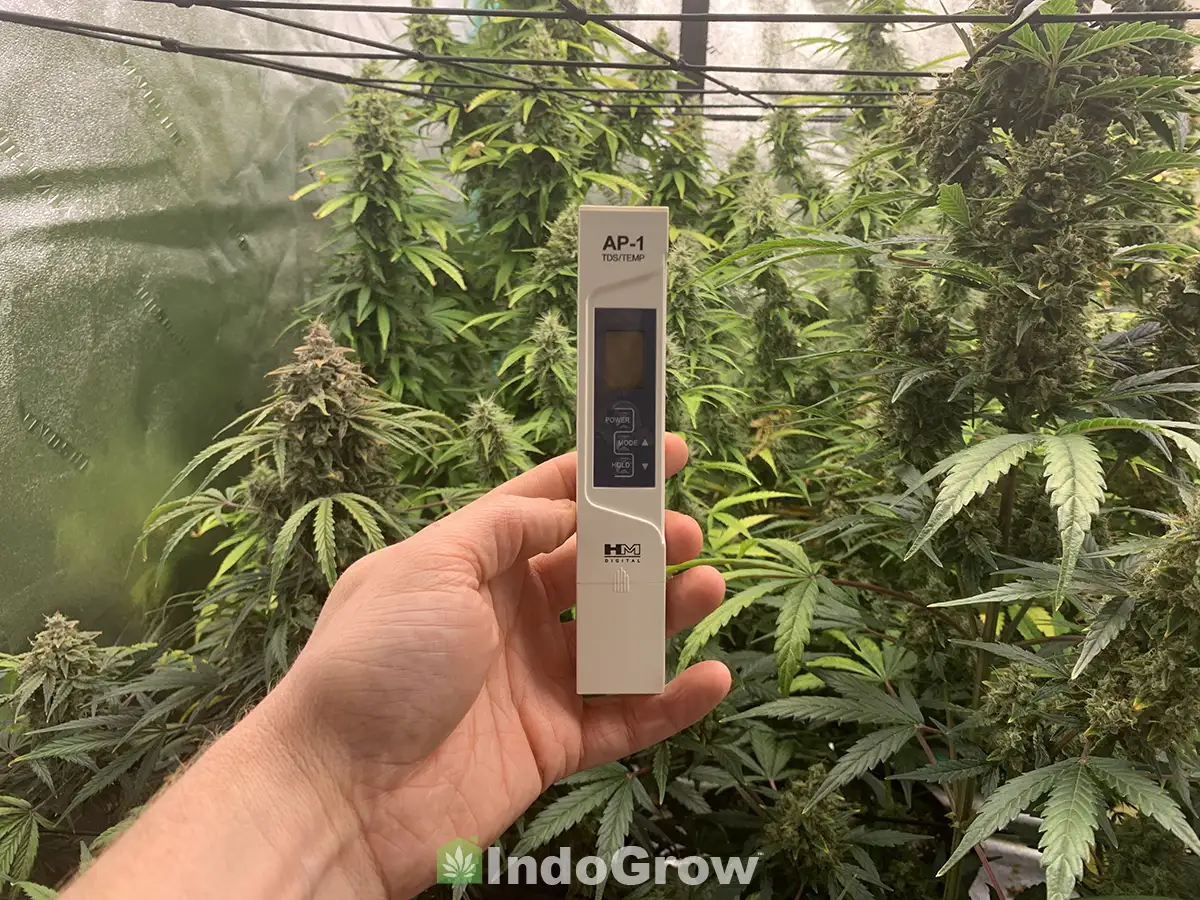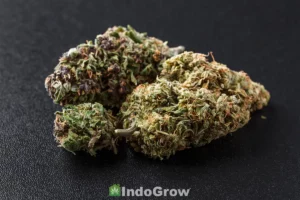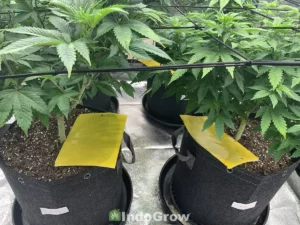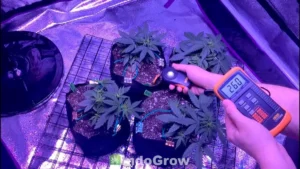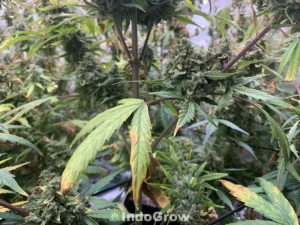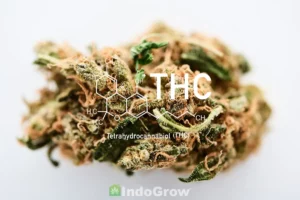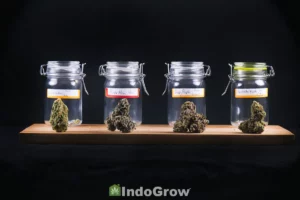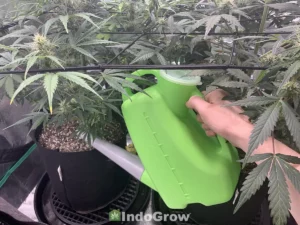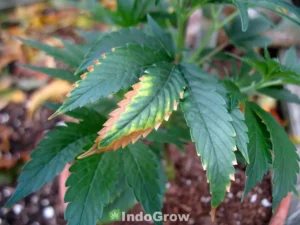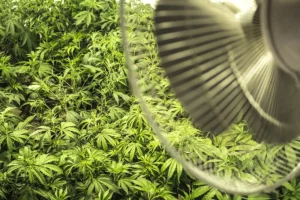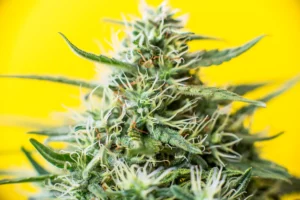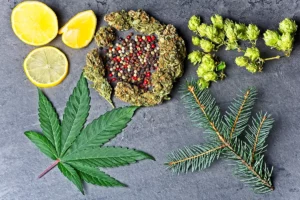When it comes to growing cannabis, maintaining the proper electrical conductivity (EC) and parts per million (PPM) levels of nutrients will help you achieve faster growth and a high-quality harvest.
EC and PPM for weed are two related metrics that measure the nutrient concentration of the water used to feed plants. Because cannabis plants have varying nutrient requirements throughout their growth cycle, maintaining appropriate EC and PPM levels can be a challenge.
In this article, we will discuss the importance of maintaining ideal EC and PPM levels for weed cultivation, and offer tips on how to achieve the ideal EC and PPM levels from seedling to harvest.
What is EC vs PPM vs TDS
EC, PPM, and TDS are three different ways to quantify the particles dissolved in your water. While all three are ultimately measuring salts, minerals, or other dissolved particles, the three measurements do have slightly different meanings and applications.
EC
EC, or electrical conductivity, is a measure of water’s ability to conduct electricity. As a general rule, a higher EC corresponds to more electrolytes dissolved in the water, although EC readings can also fluctuate with temperature. Electrolytes include minerals such as calcium, magnesium, sodium, and potassium. Water with a higher EC reading is considered more saline, as it contains greater concentrations of mineral salts.
An EC meter will find the conductivity of water by delivering a small electrical charge, then measuring how well that charge is carried through the water. Because mineral salts conduct electricity, more of these salts will lead to higher conductivity in the water and a higher EC readout.
PPM
PPM, or parts per million, is a measure of the concentration of particles in a solution. If your water has a PPM of 300, for instance, this means that there are 300 non-water particles for every 1 million water particles. Although taking the PPM of your water won’t tell you exactly what is in that water, it can serve as a helpful guide in determining if your plants are getting enough overall nutrients.
TDS
TDS, or total dissolved solids, is a measure of all the organic and inorganic substances in your water. TDS is usually not measured directly, and is instead expressed using PPM or EC readings. A TDS meter is the tool most often used to collect readings on the PPM and EC of water.
EC to PPM Calculator
The conversion of EC to PPM depends on what exactly is dissolved in your solution, as different molecules have different levels of electrical conductivity. For example, sodium chloride, or table salt, dissolved in water has a PPM of 630 with an EC of 1 mS/cm (millisiemens per centimeter), while the same EC reading of potassium chloride under the same conditions would have a PPM of around 700. EC readings will also fluctuate with temperature, with EC generally increasing as temperature increases.
The most reliable way to measure both EC and PPM is to own tools capable of measuring both values individually. However, if you are only capable of measuring one value or the other, you can look at EC to PPM conversion charts online, such as this chart from perfect grower. American growers most commonly use the 500/0.5 scale for conversions, and unless you are using a very expensive or imported TDS meter, your meter will likely use this same scale for its own conversions.
Why is PPM and EC Important for Cannabis?
Cannabis plants need specific levels of nutrients to thrive. Too many nutrients in their soil or water could cause nutrient burn, while too few could leave them nutrient deficient. Measuring PPM and EC for weed plants can give you a closer look at how many nutrients your plant is actually receiving.
PPM and EC are also helpful in determining a baseline for how much you should feed your plants. Most water, with the exception of distilled or reverse osmosis water, will have a nonzero starting PPM. In comparison, water from older wells or tap water from older pipe systems tends to have a higher PPM.
You can use these baseline readings to adjust up or down how many nutrients you add to the water for each feeding. Comparing the PPM/EC of your nutrient solution to the PPM/EC of your runoff water can also help you narrow down the ideal amount of nutrients to feed.
Cannabis PPM and EC Levels for Soil
The ideal PPM and EC for weed vary with age, with older plants needing higher levels than younger plants. The next section will discuss more specific guidelines for each life stage of cannabis in soil.
PPM and EC for Seedlings (Soil)
Seedlings prefer a PPM of 400-750 and an EC of 0.8-1.5. Because the roots of seedlings are still small and delicate, they are more susceptible to nutrient burn than older, more established plants.
PPM and EC for the Vegetative Stage (Soil)
During the early weeks of the Vegetative stage, shoot for a PPM of 800-850 and an EC of 1.6 to 1.7. In the mid to late vegetative stage, the cannabis plant will be larger and have a higher nutrient intake. Levels should increase to 900-950 PPM and an EC of 1.8 to 1.9 as the plant reaches the end of the vegetative stage.
PPM and EC for Flowering Stage (Soil)
Both PPM and EC should continue to increase throughout the flowering stage to ensure your cannabis plants are receiving enough nutrients for strong blooming. During early flowering, you will need a PPM of 950-1050 with an EC of 1.9 to 2.1. Levels should increase to a PPM of 1050-1150 and an EC of 2.1 to 2.3 by the late flowering stage.
Cannabis PPM and EC Levels for Hydroponics
Hydroponics systems will need lower PPM and EC levels for the same stages of growth compared to cannabis grown in soil. Similar to soil systems, values should start relatively low and steadily increase over the course of the grow. The next section will discuss ideal PPM and EC values for cannabis seedling, vegetative, and flowering plants in hydroponics systems.
PPM and EC for Seedlings (Hydro)
The ideal PPM for weed seedlings is 350-650, with an EC of 0.7 to 1.5. These values should slowly increase as the seedling matures and its roots become stronger.
PPM and EC for the Vegetative Stage (Hydro)
During the early vegetative stage, weed plants should receive water with a PPM of 650-750 and an EC of 1.6 to 1.7. As the plant approaches the late vegetative stage, values can be increased to a PPM of 800-900 and an EC of 1.8 to 1.9.
PPM and EC for Flowering Stage (Hydro)
In the early flowering stage, aim for a PPM of 900-1050 and an EC of 1.9 to 2.2. During the late flowering stage, these values can be increased to a PPM of 1050-1150 and an EC of 2.2-2.4.
To avoid nutrient burn, raise PPM and EC values slowly week by week until you reach the end of the flowering stage. Always keep a close eye on your plants and adjust nutrient levels up or down if you notice signs of deficiency or excess.
How to Measure PPM and EC?
For cannabis grown in soil, PPM and EC can be measured using a TDS meter. Once you have added all of your nutrients and pH up/down solutions to your water, insert the probe on the TDS meter and record the result. Next, insert the probe into the runoff water after watering and record those numbers as well.
The PPM/EC of your runoff water should be about 10% lower than that of the nutrient solution. This indicates that a healthy amount of the nutrients were absorbed into the growing medium.
If the runoff reading is the same or more than the original reading, then the soil is not absorbing the nutrients properly. Flush the soil with pH adjusted water to remove built up mineral salts, then decrease nutrients in the next feeding. If your numbers are still not within healthy range, you may need to investigate the pH level of your runoff water to ensure it is within a healthy range of about 5.8-6.2.
If the runoff water’s PPM/EC has decreased by more than 10%, this is a sign that your plants are hungry for more nutrients. Increase nutrients in the next feeding to solve this problem.
This process is very similar for hydroponics systems, except that you will take your first PPM/EC measurement from the nutrient reservoir and compare it to a second reading from the runoff reservoir.
How to Adjust PPM and EC Levels?
As mentioned in the previous section, adding or decreasing the nutrients added to your water will adjust the PPM and EC up or down. If your runoff water has a higher reading than the original, flush the soil and decrease nutrients. If the runoff value is more than 10% less than the original, increase nutrients in the next feeding.
The PPM and EC of your water are also affected by the initial hardness water that you use. Distilled water has a PPM of 0-10 and is far too soft, or mineral poor, for cannabis. Softened tap water with a PPM of 100-200 is considered an ideal starting point for growing cannabis.
Seedlings may be negatively impacted by hard water, but vegetative and flowering plants will accept water with a hardness of up to 400. Watering cannabis with a starting PPM above this range can have a negative effect by causing mineral buildup in the soil or in the tubing of a hydroponics system. Consider filtering your water or using water from a different source if your initial PPM reading before adding nutrients and pH up/down is very high.
Conclusion
In conclusion, monitoring and maintaining healthy EC and PPM for cannabis will lead to healthier plants and more efficient use of fertilizer. A TDS meter can be used to take baseline readings of your water, which can then be compared to runoff water to determine if your plants are receiving optimal nutrient levels or if they need adjustment. Monitoring EC and PPM for weed will give you an inside look into the plant’s health, allowing you to correct course before your plant shows signs of nutrient deficiency or excess.

Rocky Horton
Author
Rocky Horton is an experienced cannabis grower and the founder of IndoGrow. The IndoGrow editorial team has over four decades of combined growing experience. Learn more.

